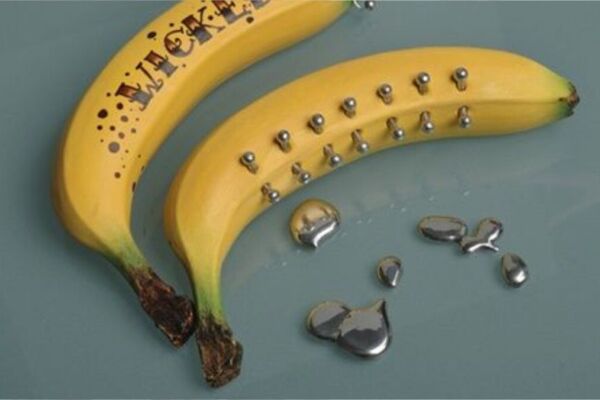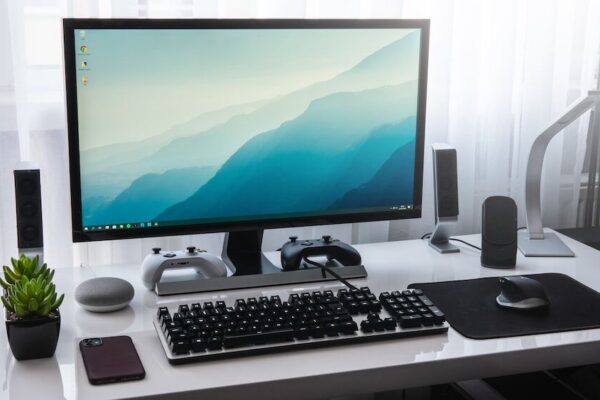Apple Inc. created, produced, and released the iPhone 8 and iPhone 8 Plus devices. They are part of the iPhone’s 11th generation. On September 22, 2017, the iPhone 8 was released, after the iPhone 7 and iPhone 7 Plus and before the iPhone X.
With the release of the second-generation iPhone SE on April 15, 2020, Apple announced that the iPhone 8 and iPhone 8 Plus would be discontinued.
Except for the inclusion of a glass back, both iPhones have identical designs to their predecessors. The rose gold and jet black colour options have been removed, and inductive charging, a speedier processor, and enhanced cameras and screens have been added. Most of the internal hardware of the iPhone 8 and 8 Plus is shared with the iPhone X.
The phones mainly received excellent reviews, with critics complimenting the addition of inductive charging, fast charging, and the new Apple A11 chipset.
Both iPhones sold 86.3 million units globally as of February 2020, making them one of the best-selling smartphones of all time.
iPhone 8 and 8 plus unboxing
The phone comes with the following accessories.
- Device
- Earpiece
- USB-C to lightning cable
- USB power adapter
iPhone 8 and iPhone 8 Plus specs
Let’s take a look at the specifications of the phones.
ALSO READ: About iPhone 6s, 6s Plus
iPhone 8 specs
- Dimensions- H: 138.4 mm (5.45 in)
- W: 67.3 mm (2.65 in)
- D: 7.3 mm (0.29 in)
- Weight- 148g
- Operating system- Original iOS 11.0 current iOS 15.4.1
- Memory- 2GB RAM, 64GB,128GB,256GB ROM
- Battery- 1821 mA.h Li-ion
- Camera- 7mp
- Color -Red, Space Gray, Silver, Gold
iPhone 8 Plus specs
- Dimensions- H: 158.4 mm (6.24 in)
- W: 78.1 mm (3.07 in)
- D: 7.5 mm (0.30 in)
- Weight- 202g
- Operating system – Original iOS 11.0 current iOS 15.4.1
- Battery- 2691 mA.h Li.ion
- Memory- 3GB RAM, 64GB,128GB,256GB ROM
- Camera-7mp
- Colours – Red, Space Gray, Silver, Gold
Display
The iPhone 8 and 8 Plus keep the identical Retina HD as the iPhone 7 but include True Tone technology, allowing automated screen modifications based on ambient illumination. They can play HDR10 and Dolby Vision material even if they don’t have an HDR-ready display. The HDR content is down-converted to match the display while still having certain benefits in dynamic range, contrast, and broad colour gamut over conventional content.
ALSO READ: iPhone 12 Pro max: what about it?
Camera
The iPhone 8 has a 12 MP camera with autofocus, f/1.8 aperture, and optical image stabilization that can shoot 4K video at 24, 30, or 60 frames per second and 1080p video at 30, 60, 120, or 240 frames per second.
The iPhone 8 Plus keeps a second telephoto lens similar to the one featured on the iPhone 7 Plus, but with improved depth-of-field and lighting effects in Portrait mode, and replaces the primary camera with a wide-angle lens with up to 10 digital zoom or 2 optical zoom.
Both variants contain a 7-megapixel front camera with an f/2.2 aperture that can record 1080p video at 30 frames per second and 720p video at 24 frames per second, as well as face identification and excellent dynamic range.
Single-channel audio is recorded on the iPhone 8 and iPhone 8 Plus (mono).
Images with a resolution of 6.5 megapixels (34121920) can be taken during video recording.
Design
The Apple A11 Bionic system-on-chip is included in the iPhone 8 and 8 Plus. It is a hexa-core processor with two cores that are 25% faster than the A10 processor in the iPhone 7 and four cores that are 70% quicker than the previous generation. The phones also have an Apple-designed graphics processing unit that is 30% quicker than previous models, delivering the same level of performance as the A10 while using half the power.
The phones have glass backs rather than the all-aluminium shell of previous generations, allowing for Qi wireless charging. The phones have an IP67 rating for water and dust protection. Both variants are available in silver, gold, or Space Gray colours and have 64 and 256 gigabytes of storage. On April 9, 2018, a red special edition variant with a black front was introduced.
The iPhone 8 supports Qi wireless charging and cable charging using Apple’s proprietary Lightning connector. It can be charged quickly using a USB Power Delivery charger and a specific USB-C to Lightning adapter cable that supports rapid charging.
iFixit has given the iPhone 8 a 6 out of 10 repairability rating, owing to the heavy use of glue for the back glass.
Software
The iPhone 8 and 8 Plus came with iOS 11 out of the box. However, they also support iOS 12, iOS 13, iOS 14, and iOS 15.
iPhone 8 and 8 Plus pricing
Apple stopped producing the iPhone 8 and iPhone 8 Plus in April 2020; therefore, they are no longer available. The phones are still available, but only second-hand, in what is known as ‘UK-used’ or refurbished condition. The UK used, or second-hand version of the phone is still available in Computer Village retail stores and online stores such as Jumia and Konga. Depending on the memory size, prices range from NGN 100,000 to NGN 230,000.
ALSO READ: iPhone 11 vs iPhone XR
iPhone 8 Review
The good
Despite the fact that the iPhone 8 has been on the market for six years, the phone is still a very solid phone. Users have some positive reviews about the phone.
Firstly the camera of the phone is of top-notch quality. The phone is still regarded as one of the best phones you can buy.
In addition, the iPhone 8 has a decent battery life as compared to the iPhone 6 or 7. The phone also has fast charging, so you don’t necessarily have to charge the phone for hours.
The fact that one can update the iOS to the recent iOS 14 is an added advantage for users of the phone.
The bad
Although the phone has been on the market for a while, it is still one of the most expensive phones. Even the refurbished and second-hand versions of the phone are equally expensive.
Users also complained that the thick bezel, TouchID fingerprint sensor, and tiny display are far from the current full-screen phones we’ve come to expect from Apple.
Another user complained about the glass back of the phone. The obvious disadvantage of glass is its brittleness. The concern here is that a drop that would have left no lasting damage on the iPhone 7 will result in a severely damaged back on the iPhone 8.
ALSO READ: About iPhone 11








